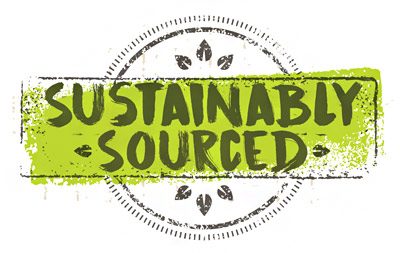by Mark Stephens Jun 10, 2022 Comments
What’s a Good Way to Finish a Mahogany Woodworking Project?
In this video, I used 4 of my favorite products for hand-applied finishes, and in this order:
Tung oil varnish, dewaxed shellac, gel polyurethane, and paste wax.
I arrived at this set of products because I like how the tung oil varnish gives this wood a beautiful, warm glow – but I figured a table top might benefit from the added toughness of a polyurethane. Here’s how to get the best of both worlds.
In short, this recipe handles the essentials –
To understand a little more, let’s walk through each product and why I used it.
The tung oil varnish brings out the warm, deep reddish brown color, and it’s super simple to apply by wiping it on and off with a shop towel. Except, I also “wet sanded” the tung oil varnish, which is an optional technique. I like the way the wet sanding action fills the grain with mahogany dust which helps accentuate the nuances in the grain patterns. Notice, too, that this isn’t 100% tung oil. Instead, this is a tung-oil-with-varnish blend, and that simply means it’s easier to work with, dries faster, and contains a bit of varnish that dries hard.
Dewaxed shellac simply seals the tung oil varnish and ensures compatibility for the gel polyurethane. Admittedly, you might be able to forfeit this step. I used it just to make sure the gel polyurethane would adhere to the project. Why? Because there’s a chance that it may not adhere to the tung oil varnish even after it’s cured. So, to be safe, I sealed it with dewaxed shellac because it’s essentially a universal sealer that’s compatible with virtually all top coat wood finishes.
Likewise, the gel polyurethane isn’t absolutely necessary, either. But it is a tougher top coat than the tung oil varnish by itself. Likewise, you could skip this and simply apply only the Tung Oil Varnish, perhaps building up 8 to 10 coats or so. That’s perfectly acceptable to do, especially on projects like a decorative box, shelving, a chest of drawers, etc, that don’t need the water and abrasion resistance that polyurethane offers.
Since this is a table top, I jumped over to gel polyurethane for the final 3 coats. And I picked a gel type because I find it easier to apply than a brush-on type…. and I think more people would benefit from learning about how easy gel polyurethane is to apply. So here we are.
And finally, I applied a little paste wax after letting the last coat dry for a few days. Why paste wax? Je ne sais quoi. It gives the project a little shine and helps give it a baby-bottom smooth feel.
We stock a massive selection of Mahogany for your woodworking projects
We might want to set a couple things straight about this wood. There’s more than one species that gets tagged with the name “mahogany.” To a large degree, when I say mahogany, I’m talking about the stuff known throughout the industry as Genuine Mahogany, which is botanically named Swietenia macrophylla.
So why do I care?
Once upon a time, everyone referred to it as “Honduran mahogany” because Honduras was the primary country that produced mahogany lumber. Regretfully, the country over-harvested their supply and the majority of the production shifted to other parts of Central and South America where Swietenia macrophylla trees grew. Which is practically everywhere from Mexico to Bolivia.
So even though the same wood grows in Honduras as what might come from Bolivia, it’s not quite fair to call it “Honduran” if it didn’t really get harvested and exported from Honduras soil. So the industry uses the term genuine.
Likewise, this differentiates it from African mahogany, which is another wood with a similarly regal appearance and timeless beauty. But it’s plentiful, popular, and quite inexpensive. African mahogany and genuine mahogany, for the most part, look alike. They have some differences that you can feel with your hands, but you’ll need a trained eye to tell the difference just by looking at them side by side. However, Africa is a totally different continent.
 Finding Sustainably Managed Mahogany
Finding Sustainably Managed MahoganyIn the 1940s, the British more or less saw the writing on the wall for the future of Honduran mahogany as the forests in Honduras depleted. To ensure the future supply of this species of mahogany, they re-planted and set up managed plantations of Swietenia macrophylla trees in (of all places) Fiji.
Plantation grown genuine mahogany not only relieves the natural forests of the downsides of tree harvesting, but it also is managed to ensure the future supply of the wood while providing economic opportunity for the island locals.
Vice President of Operations – Woodworkers Source
We’re a family-owned lumber & woodworking supply retailer with 3 delightful stores in Arizona, and 35 friendly employees.
Mark oversees the company and creates tutorials on wood finishing and woodworking tips for hardwood lumber.
Woodworkers Source is a division of MacBeath Hardwood Co.
Phoenix 602-504-1931
Tempe 480-355-5090
Tucson 520-745-8301
18115 N. Black Canyon Hwy
Phoenix, AZ 85023
[email protected]
602-504-1931
645 W. Elliot Road
Tempe, AZ 85284
[email protected]
480-355-5090
3441 S. Palo Verde
Tucson, AZ 85715
[email protected]
520-745-8301

